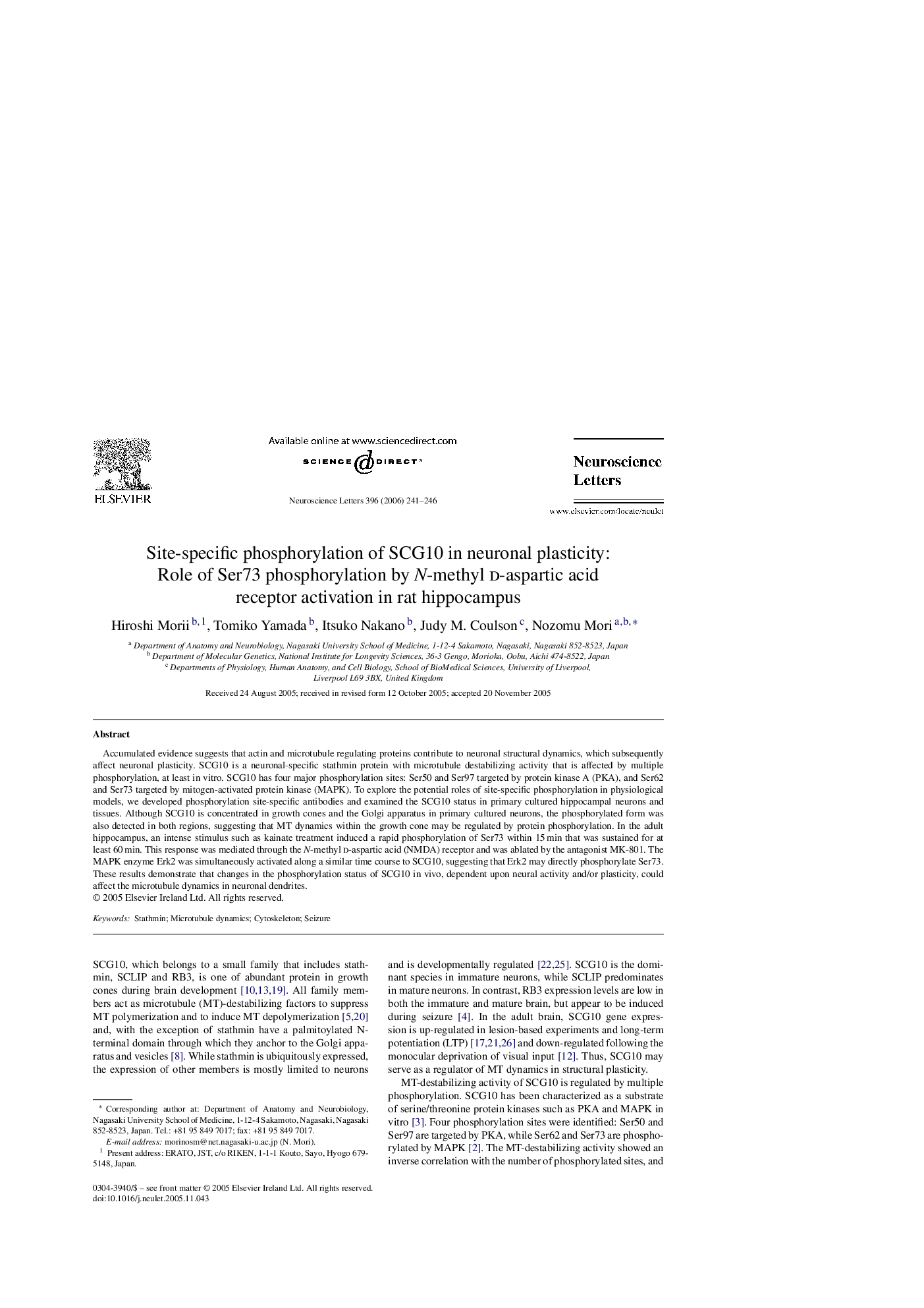| Article ID | Journal | Published Year | Pages | File Type |
|---|---|---|---|---|
| 4350843 | Neuroscience Letters | 2006 | 6 Pages |
Accumulated evidence suggests that actin and microtubule regulating proteins contribute to neuronal structural dynamics, which subsequently affect neuronal plasticity. SCG10 is a neuronal-specific stathmin protein with microtubule destabilizing activity that is affected by multiple phosphorylation, at least in vitro. SCG10 has four major phosphorylation sites: Ser50 and Ser97 targeted by protein kinase A (PKA), and Ser62 and Ser73 targeted by mitogen-activated protein kinase (MAPK). To explore the potential roles of site-specific phosphorylation in physiological models, we developed phosphorylation site-specific antibodies and examined the SCG10 status in primary cultured hippocampal neurons and tissues. Although SCG10 is concentrated in growth cones and the Golgi apparatus in primary cultured neurons, the phosphorylated form was also detected in both regions, suggesting that MT dynamics within the growth cone may be regulated by protein phosphorylation. In the adult hippocampus, an intense stimulus such as kainate treatment induced a rapid phosphorylation of Ser73 within 15 min that was sustained for at least 60 min. This response was mediated through the N-methyl d-aspartic acid (NMDA) receptor and was ablated by the antagonist MK-801. The MAPK enzyme Erk2 was simultaneously activated along a similar time course to SCG10, suggesting that Erk2 may directly phosphorylate Ser73. These results demonstrate that changes in the phosphorylation status of SCG10 in vivo, dependent upon neural activity and/or plasticity, could affect the microtubule dynamics in neuronal dendrites.
